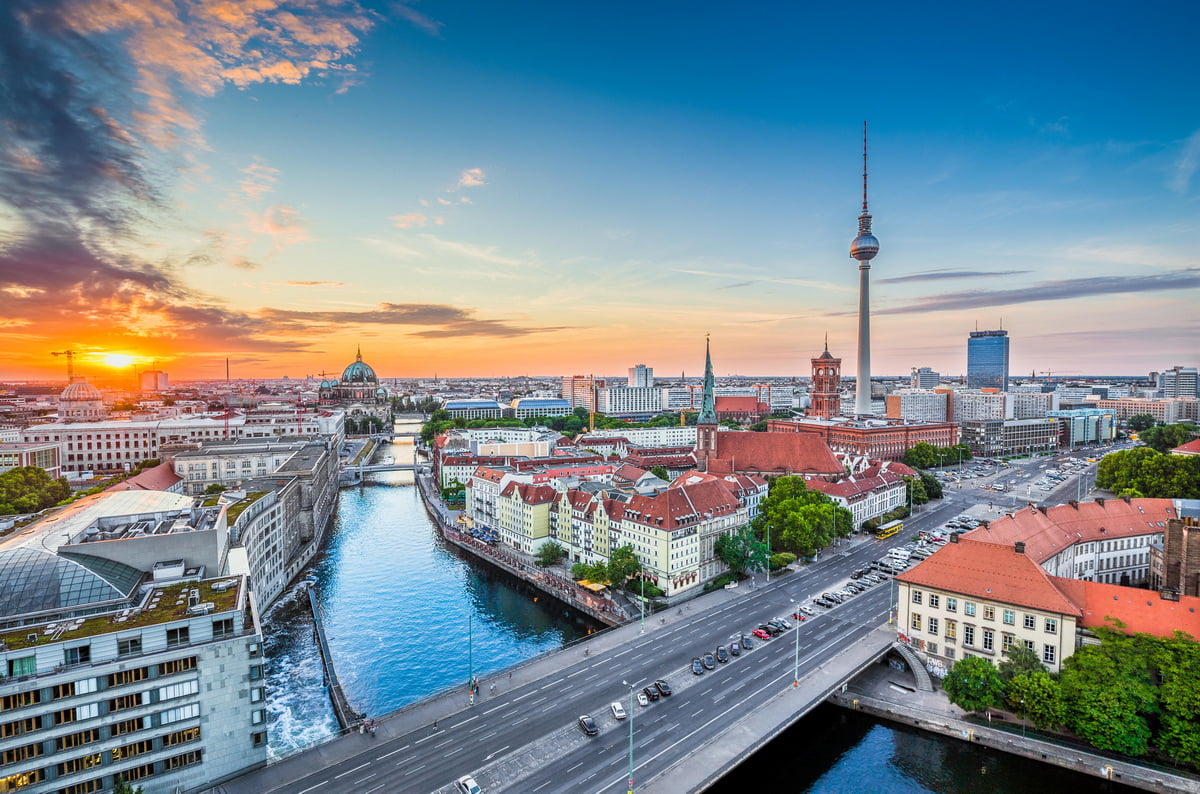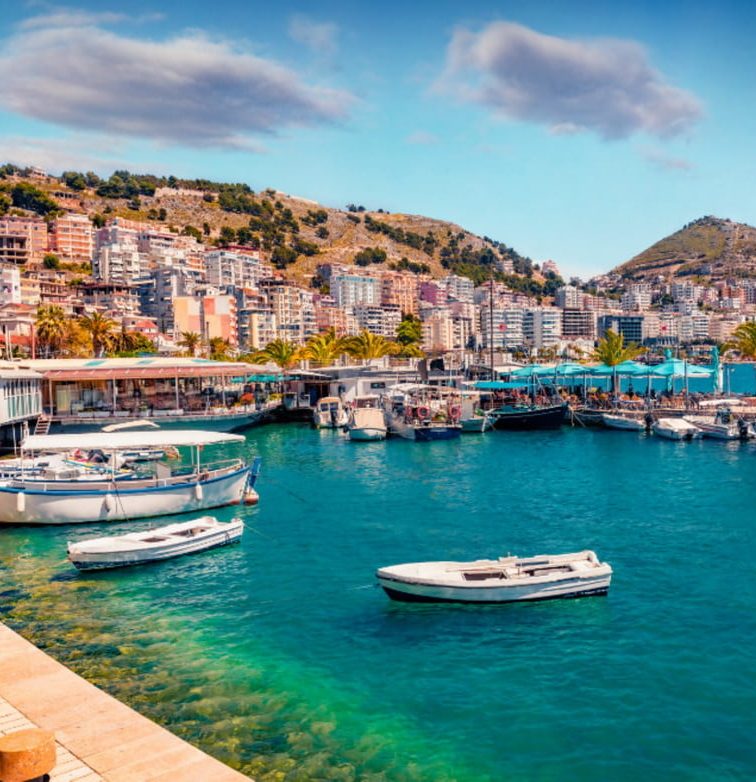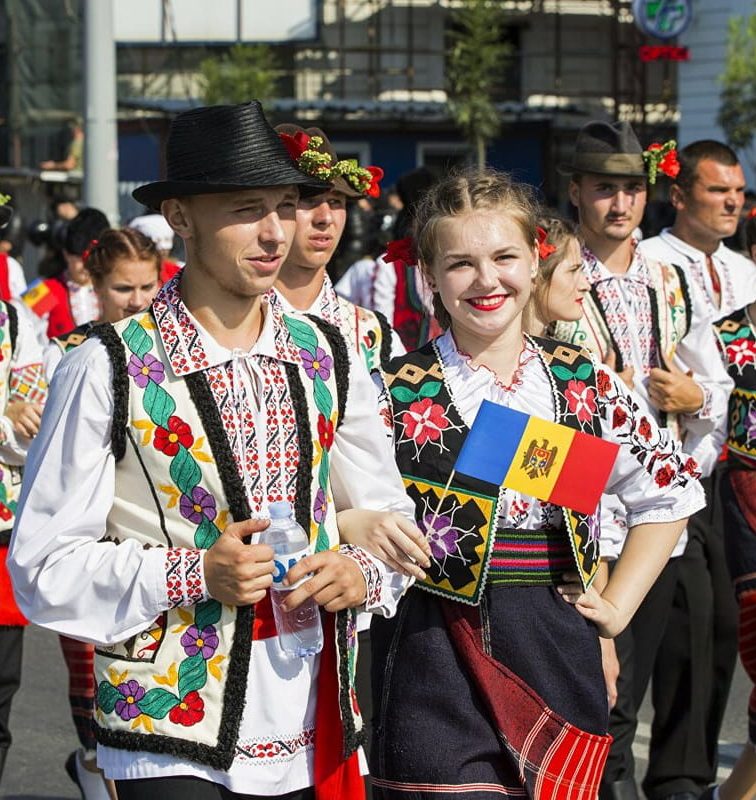Berlin, a city of contrasts and surprises, boasts more bridges than Venice, offers a legendary nightlife, and houses the world’s longest open-air gallery. Imagine dining in Berlin’s oldest restaurant, operating since 1621, or exploring the vast Museum Island.
The city’s innovative spirit is evident in its thriving tech startup scene and its role as the birthplace of the modern seamless condom. Berlin’s rich history is visible in every corner, from the poignant Berlin Wall Memorial to the iconic Berlin Television Tower. Dive into these and many more fun facts about Berlin in our captivating article.
1. Berlin Has More Bridges Than Venice
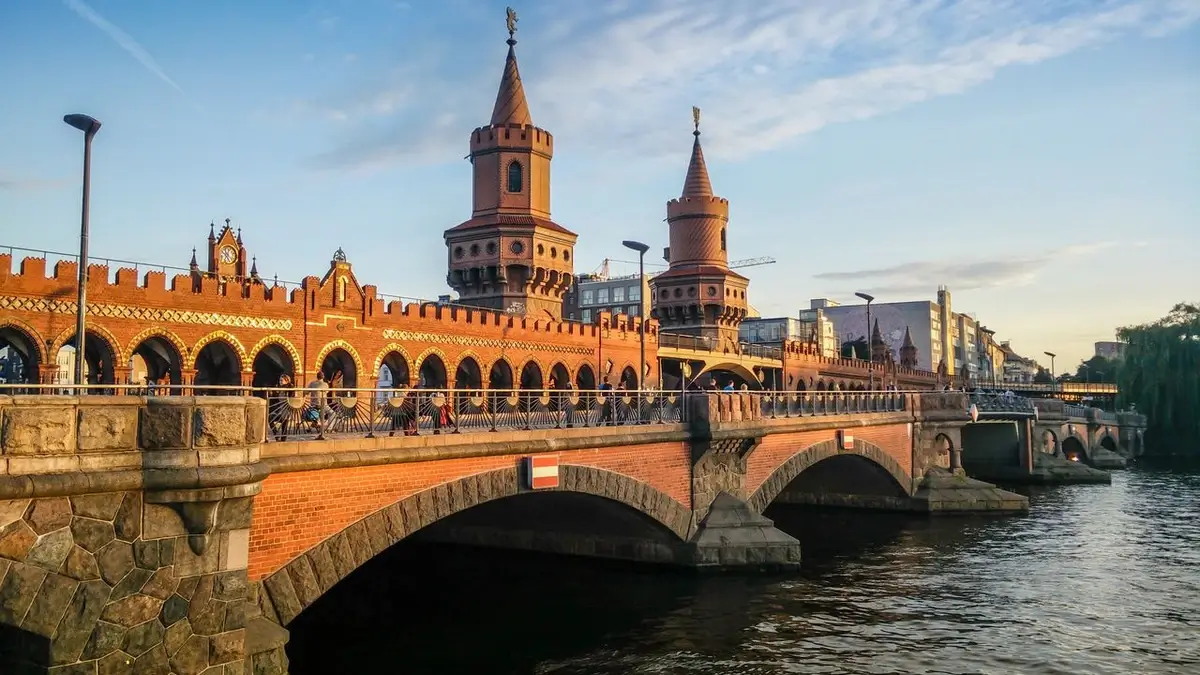
Oberbaum Bridge in Berlin. Image: imgur.com
Berlin boasts an impressive array of over 1,700 bridges, surpassing the famous canals of Venice, which has around 400 bridges. This extensive network of bridges is a testament to Berlin’s unique geography and historical development. The Spree River and numerous canals that crisscross the city necessitated the construction of these bridges, creating a picturesque urban landscape.
One of the most iconic bridges in Berlin is the Oberbaum Bridge, which not only serves as a vital transportation link but also stands as a symbol of the city’s tumultuous history. During the Cold War, it was one of the few crossing points between East and West Berlin, making it a significant historical landmark. Today, the Oberbaum Bridge is a vibrant part of Berlin’s cultural scene, featured in films and surrounded by lively nightlife and artistic communities.
The city’s extensive waterways and bridges are not just functional but also enhance its aesthetic appeal, offering scenic routes and picturesque views. This abundance of bridges highlights Berlin’s ability to integrate its rich history with modern urban life, providing both residents and visitors with numerous opportunities to explore its diverse neighborhoods.
2. The Iconic Ampelmännchen
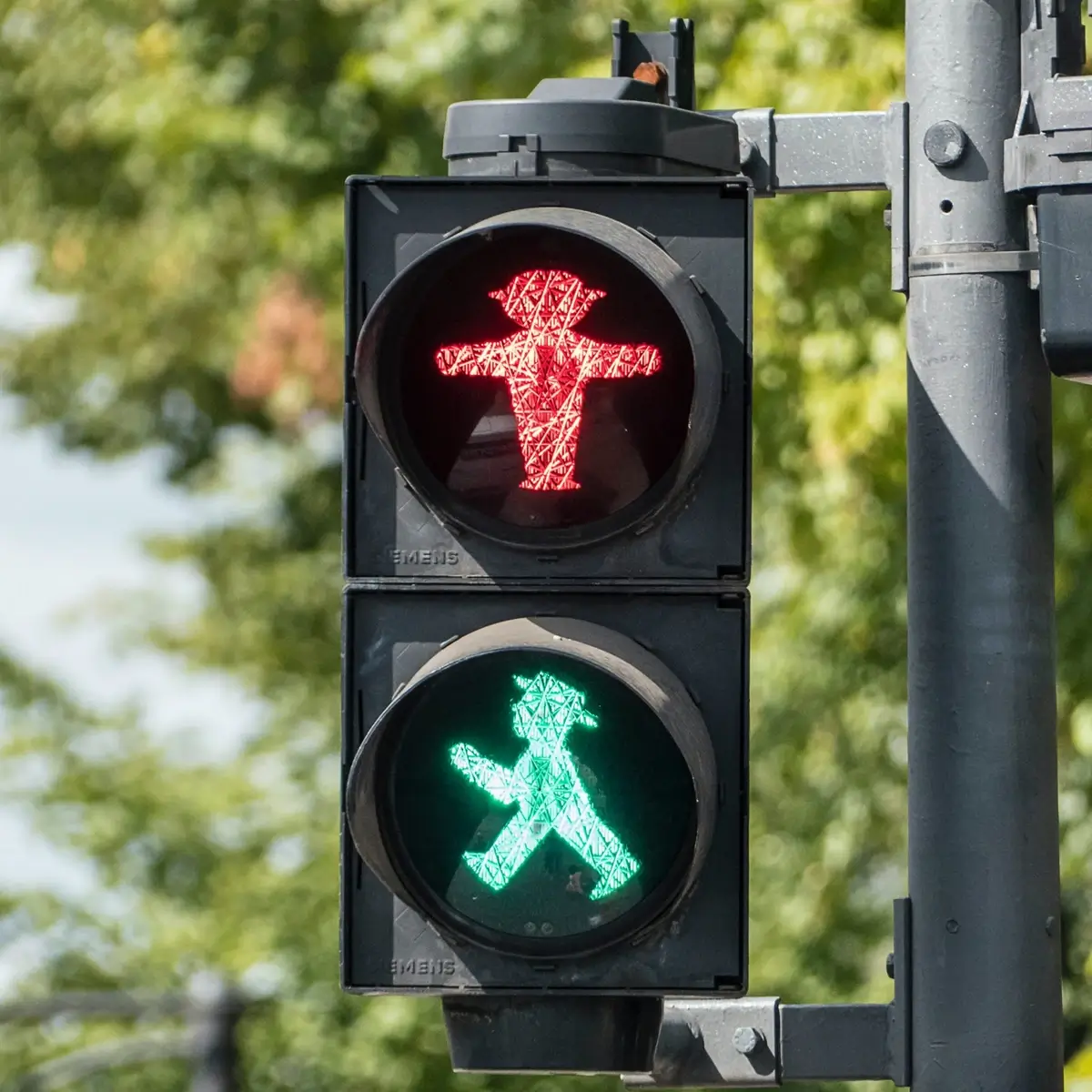
An Ampelmännchen traffic light in Berlin. Image: unilim.fr
The Ampelmännchen, or “little traffic light man,” is an enduring symbol of Berlin’s unique history. Created in the early 1960s by East German traffic psychologist Karl Peglau, the Ampelmännchen was designed to improve road safety. Peglau’s aim was to create a visually engaging and functional traffic signal that would capture the attention of pedestrians, particularly children and the elderly.
The design features a rotund figure wearing a hat, with the red figure standing still and the green figure walking briskly. This distinctive and friendly appearance helped the Ampelmännchen become a beloved part of East German culture. After the fall of the Berlin Wall, there were attempts to standardize traffic signals across the reunified Germany, which included replacing the Ampelmännchen with the more conventional West German pedestrian signals. However, public outcry led to the preservation and even the spread of the Ampelmännchen throughout Berlin and beyond.
Today, the Ampelmännchen is more than just a traffic signal; it is a cultural icon representing Berlin’s history and nostalgia for certain aspects of East German life. The figure is featured on various souvenirs, from T-shirts to keychains, and even has dedicated shops in Berlin. The Ampelmännchen’s legacy continues to be a quirky and charming part of Berlin’s urban landscape.
3. The Oldest Restaurant in Berlin
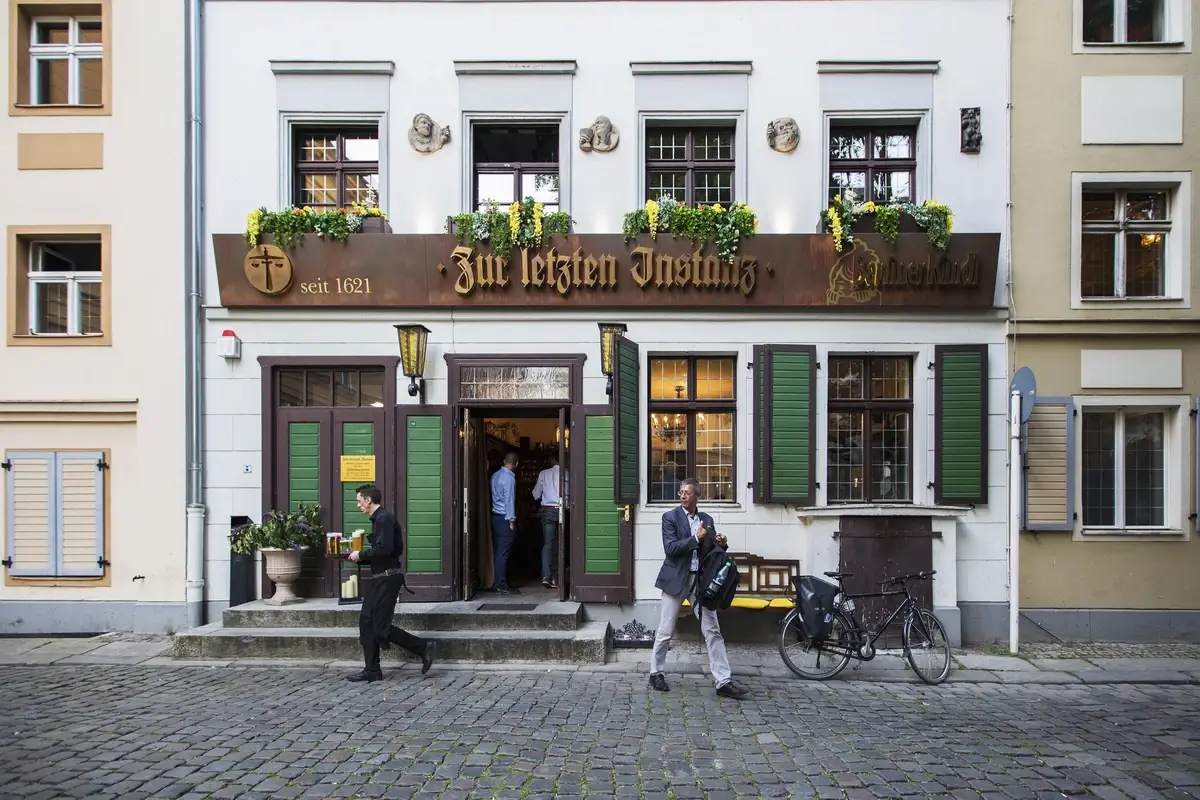
Image: Pinterest
Zur Letzten Instanz is the oldest restaurant in Berlin, with a history dating back to 1621. Located near the Klosterstraße U-Bahn station and the historic Nikolaiviertel, this restaurant has been a witness to centuries of Berlin’s transformation. The establishment started as a pub by a servant of the Elector of Brandenburg, and its current name, adopted in 1924, comes from a nearby courthouse where litigants would resolve disputes over a drink.
During World War II, Zur Letzten Instanz was heavily damaged, but it was restored and reopened in 1963. The restaurant boasts a rich history with patrons like Napoleon Bonaparte and more recently, figures such as Mikhail Gorbachev and Gerhard Schroeder. The interior features original decor, including a famous 200-year-old tiled stove, and offers traditional German cuisine, emphasizing rustic and hearty meals.
4. A City of Museums
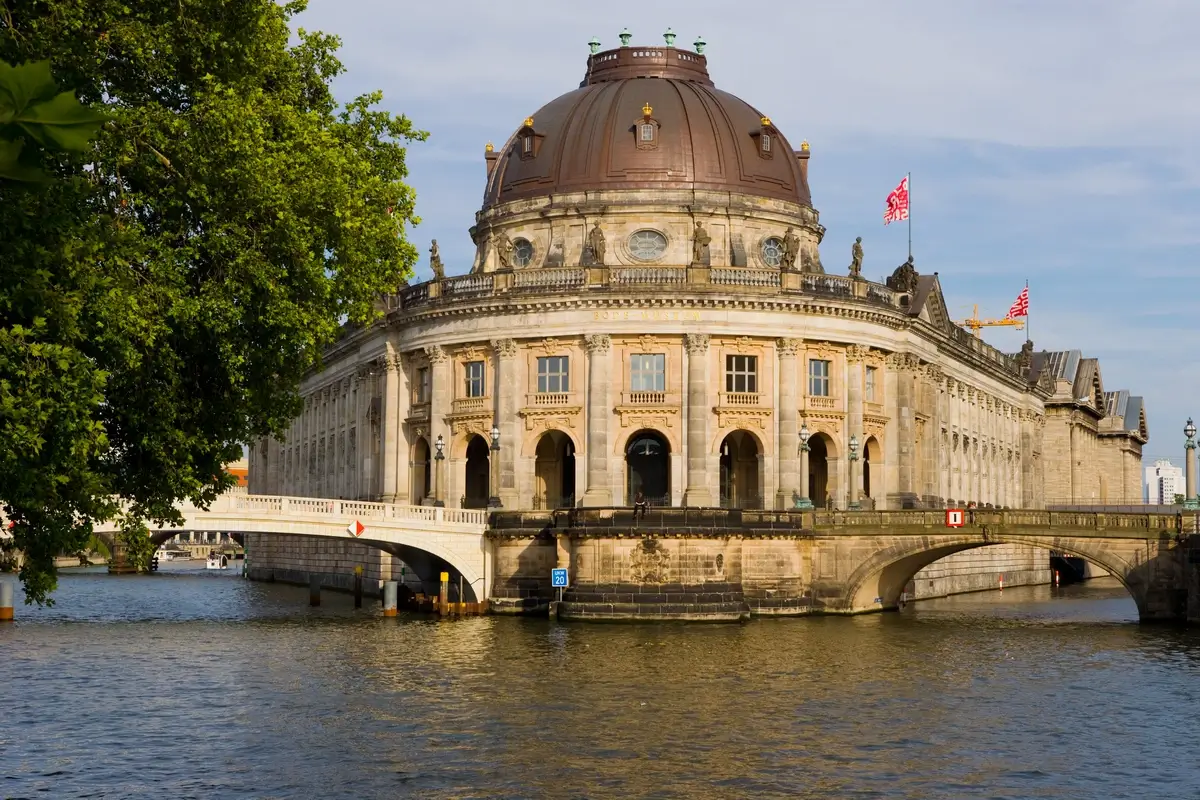
Image: cntraveler.com
Berlin is a treasure trove for museum enthusiasts, boasting over 170 museums that cover a diverse range of topics from art and history to technology and natural sciences. The most famous collection is on Museum Island, a UNESCO World Heritage site, home to five renowned museums, including the Pergamon Museum and the Altes Museum. These institutions illustrate the evolution of museum design from the 19th century and hold artifacts that trace the development of civilizations across millennia.
Other notable museums in Berlin include the Jewish Museum, with its striking architecture and focus on German-Jewish history, and the German Historical Museum, which provides a comprehensive overview of Germany’s past. For those interested in contemporary art, the Hamburger Bahnhof Museum is a must-visit, showcasing modern masterpieces.
5. The Tallest Structure: Berlin Television Tower
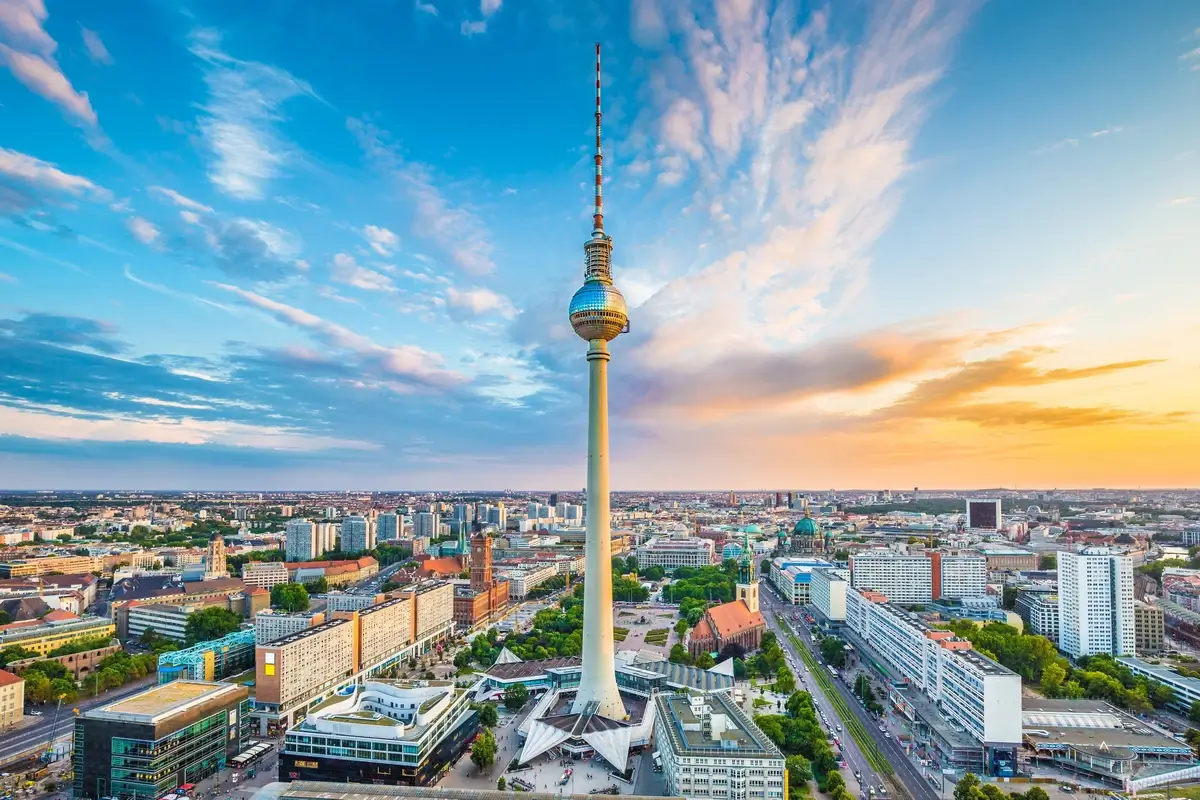
Image: travelguide.net
The Berlin Television Tower, or Fernsehturm, is the tallest structure in Berlin, standing at an impressive 368 meters. Originally constructed in 1969 by the German Democratic Republic (GDR), it was intended to be both a broadcasting tower and a symbol of communist power. The tower’s height was increased in the 1990s with the addition of a new antenna, making it the fourth tallest freestanding structure in Europe.
Located near Alexanderplatz, the tower features a viewing platform at 203 meters, offering panoramic views of Berlin. On a clear day, visitors can see up to 42 kilometers. There’s also a revolving restaurant at the same height, providing a unique dining experience with ever-changing vistas. The tower is equipped with two elevators that transport visitors to the top in just 40 seconds.
6. Berlin’s Famous Beer Festival

Image: internationaltraveller.com
The International Berlin Beer Festival is a highlight of Berlin’s cultural calendar, held annually during the first weekend of August. Since its inception in 1997, the festival has grown to attract over 800,000 visitors each year. Celebrated along the Karl-Marx-Allee, a 2.2 km stretch, it transforms into the “world’s longest beer garden,” recognized by Guinness World Records in 2011.
The festival features over 1,800 different beers from more than 240 breweries across 80 countries, divided into themed beer regions. This diverse selection offers a unique opportunity to explore global beer cultures in one location. Beyond the beer, the festival also hosts various entertainment options, including live music across multiple stages and processions of historical brewery vehicles.
7. The Battle of Berlin

Soviet soldiers raising the flag over the Reichstag. Image: factinate.com
The Battle of Berlin, one of the final major offensives of World War II, marked the end of Nazi Germany. Beginning on April 16, 1945, Soviet forces, led by Marshals Georgy Zhukov, Konstantin Rokossovsky, and Ivan Konev, launched a massive assault on the German capital. The Germans, led by General Helmuth Weidling, mounted a desperate defense but were vastly outnumbered and outgunned.
The Soviets employed a combination of frontal assaults, flanking maneuvers, and intense urban warfare, with over 2.5 million soldiers involved. Despite fierce resistance, the Red Army gradually encircled and penetrated the city. On April 30, Adolf Hitler committed suicide, and by May 2, Berlin surrendered to the Soviets.
The battle resulted in immense casualties, with estimates of 81,000 Soviet and 92,000 German soldiers killed, along with thousands of civilian deaths due to bombardment and fighting. The fall of Berlin led to Germany’s unconditional surrender on May 8, 1945, effectively ending the war in Europe.
8. The World’s Most Visited Zoo

Elephant entrance, Zoo Berlin. Image: lonelyplanet.com
Berlin Zoological Garden, commonly known as Berlin Zoo, is the most visited zoo in the world, attracting over 3.5 million visitors annually. Established in 1844, it is Germany’s oldest zoo and houses around 20,000 animals from 1,200 species. This iconic zoo stands out for its rich history, having survived significant destruction during World War II and rebuilding itself into a world-class facility.
Berlin Zoo is renowned for its extensive biodiversity. It features meticulously designed habitats that replicate the natural environments of its inhabitants. Notable exhibits include the Panda Garden, the World of Birds, and the historic Aquarium, which opened in 1913. The zoo also actively participates in global conservation efforts, maintaining studbooks and breeding programs crucial for the survival of endangered species.
Visitors can enjoy educational programs, guided tours, and special events year-round. The zoo’s accessibility and range of amenities, including rest areas and dining options, ensure a comfortable and enriching experience for all.
9. The Longest Open-Air Gallery
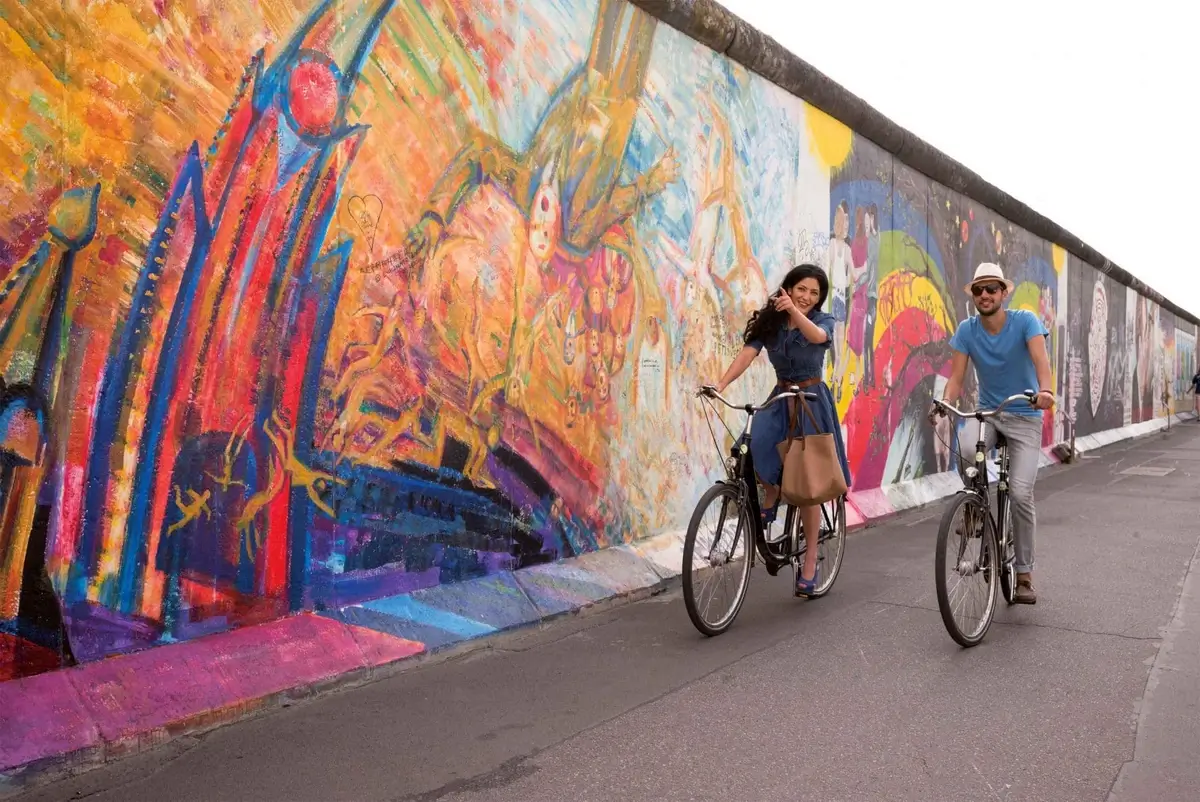
Image: cleverreisen.club
Berlin’s East Side Gallery, stretching 1.3 kilometers along the Spree River, is the longest open-air gallery in the world. This iconic site features over 100 murals painted on a preserved section of the Berlin Wall.
Created in 1990 by artists from 21 countries, the gallery transformed a symbol of division into a vibrant celebration of freedom and unity. Notable artworks include Dmitri Vrubel’s “The Mortal Kiss” and Birgit Kinder’s “Trabant Breaking Through the Wall.” The gallery stands as a testament to the peaceful reunification of Germany and is a protected historical monument, drawing millions of visitors annually.
10. Berlin’s Impressive Number of Theaters

Berlin State Opera. Image: Wikimedia Commons
Berlin is a city rich in theatrical culture, boasting over 140 theaters. This impressive array includes historic opera houses, avant-garde stages, and traditional theaters. Notable institutions include the Berlin State Opera, founded in 1742, and the Volksbühne, known for its innovative productions.
The Deutsches Theater, established in 1850, remains a cornerstone of classical and contemporary German drama. The Theater des Westens, renowned for its musical productions, showcases Berlin’s diverse theatrical offerings. This vast number of theaters reflects Berlin’s vibrant arts scene, making it a global cultural hub.
11. Berlin’s Extensive Waterways
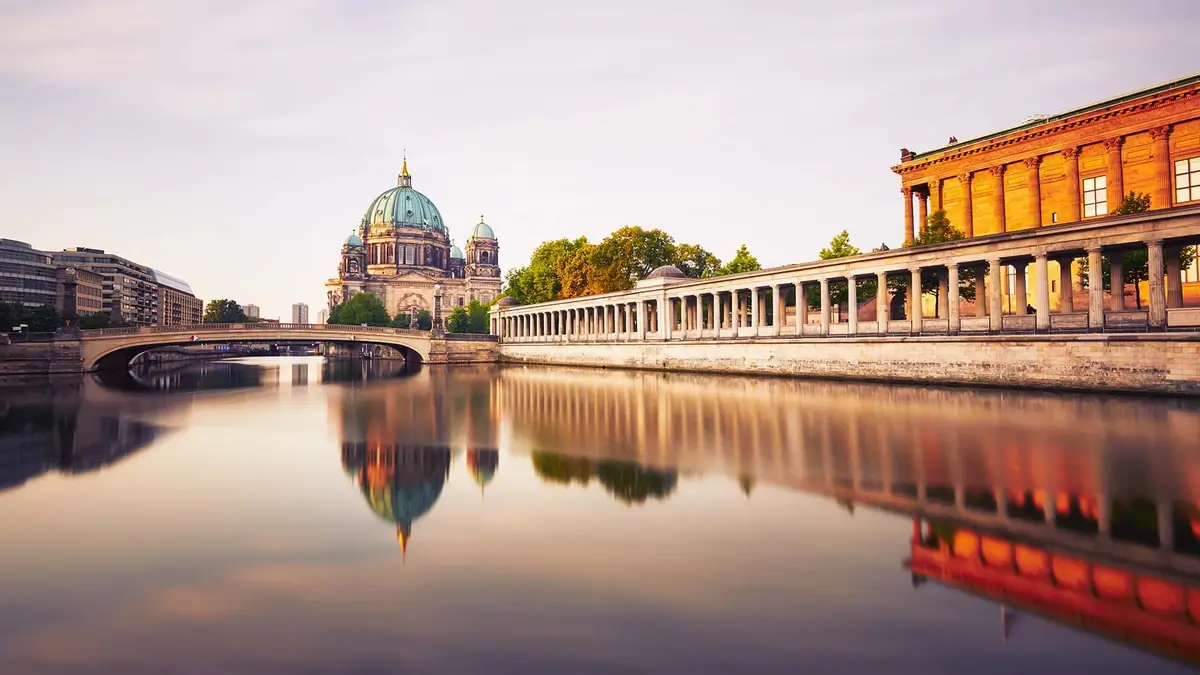
River Spree in Berlin. Image: bus2alps.com
Berlin boasts an intricate network of waterways, more extensive than those of Venice. The city’s landscape is interwoven with numerous rivers, lakes, and canals, totaling over 180 kilometers of navigable routes. Key waterways include the River Spree and the River Havel. The Spree meanders through the heart of Berlin, passing iconic landmarks such as the Reichstag and Museum Island, while the Havel connects several picturesque lakes, including Wannsee and Tegeler See.
These waterways not only enhance the city’s scenic beauty but also provide opportunities for boating, swimming, and sightseeing. Berlin’s waterways have historical significance, with many bridges and waterfront structures reflecting the city’s rich cultural heritage.
12. The Largest Frozen Pizza Factory

Image: lebensmittelzeitung.net
Berlin is home to the world’s largest frozen pizza factory, owned by Freiberger Lebensmittel GmbH. Located in the Wittenau district, this factory produces up to one million pizzas daily. Founded in 1976, Freiberger has grown to be Europe’s leading manufacturer of frozen pizzas, snacks, and pasta products, supplying major supermarket chains with their own-brand pizzas.
Freiberger’s extensive production capabilities are supported by their parent company, Südzucker AG, which acquired them in 1998. This strategic move helped Freiberger expand its market reach across Europe and the USA. The factory’s state-of-the-art technology and rigorous quality control measures ensure consistent product quality and safety.
13. The Birthplace of Currywurst

Image: nationalgeographic.com
Currywurst, a beloved German fast food, was invented in Berlin in 1949 by Herta Heuwer. She created the dish by combining a grilled pork sausage with a unique sauce made from ketchup, Worcestershire sauce, and curry powder she obtained from British soldiers. Herta first sold her creation at a street stand in the Charlottenburg district, and it quickly became a hit among locals and visitors.
Herta’s innovative dish captured the post-war zeitgeist, offering an affordable and flavorful meal in a time of economic hardship. Today, Berliners consume over 70 million currywursts annually, and the city celebrates this culinary icon with the Deutsches Currywurst Museum, dedicated to the dish’s history and cultural impact.
14. The Berlin Wall’s Length

Image: indiatimes.com
The Berlin Wall, constructed in 1961, stretched approximately 155 kilometers (96 miles), dividing East and West Berlin until its fall in 1989. It was a stark symbol of Cold War tensions, physically and ideologically separating families and communities.
The Wall consisted of a 3.6-meter-high concrete barrier, reinforced with barbed wire, watchtowers, and anti-vehicle trenches. The “Death Strip” on the eastern side further enforced this division, deterring escape attempts. The Wall’s fall marked the end of an era, paving the way for German reunification and the end of the Cold War.
15. Home to the Largest Department Store in Europe
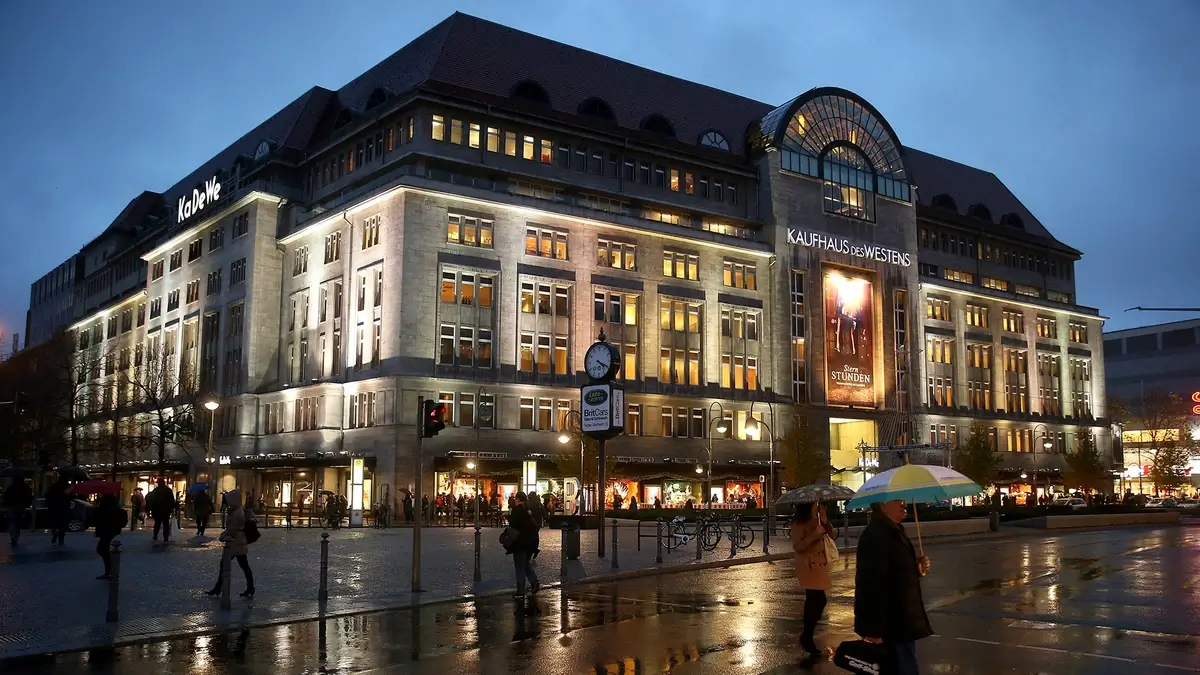
Image: cnn.com
KaDeWe (Kaufhaus des Westens), located in Berlin, is the largest department store in Europe, covering an impressive 60,000 square meters of retail space. Opened in 1907, KaDeWe has become an iconic shopping destination, offering a wide array of luxury goods, high-end fashion, and gourmet foods. The store spans six floors, each dedicated to different categories of products, including designer clothing, beauty products, and home décor.
The sixth floor is particularly famous for its gourmet department, which features a vast selection of international delicacies, premium food products, and various eateries. The store’s historical significance is marked by its survival and reconstruction after World War II, reopening in 1950 to become a symbol of Berlin’s resilience and post-war recovery.
16. Berlin’s Abandoned Airport
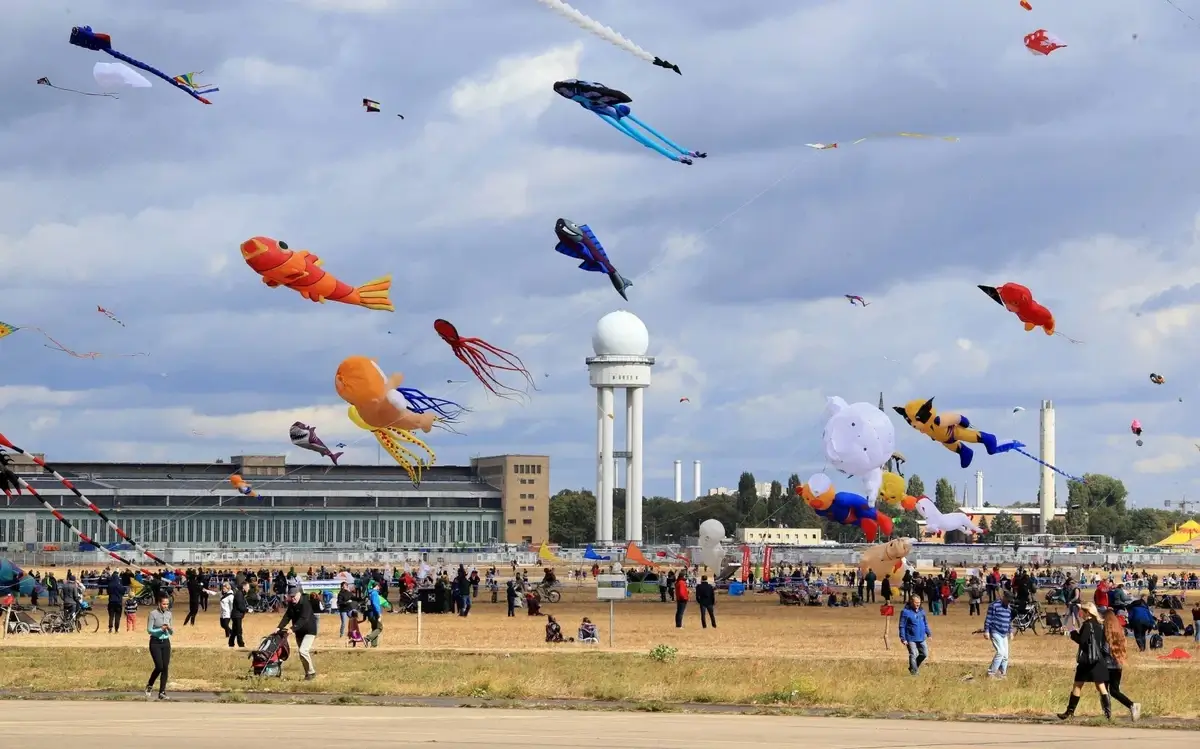
Image: tip-berlin.de
Tempelhof Airport, once a major transportation hub in Berlin, closed its doors in 2008. Now repurposed as Tempelhofer Feld, it has become a vast public park, blending historical significance with modern leisure activities. Visitors can cycle, skate, and picnic on the former runways, which stretch over 386 hectares.
The airport’s main terminal, once the world’s largest building, stands as a testament to its storied past, including its role during the Berlin Airlift of 1948-1949. Today, Tempelhofer Feld is a popular spot for urban gardening, kite-flying, and cultural events, offering a unique open space in the heart of the city.
17. Berlin’s Underground World
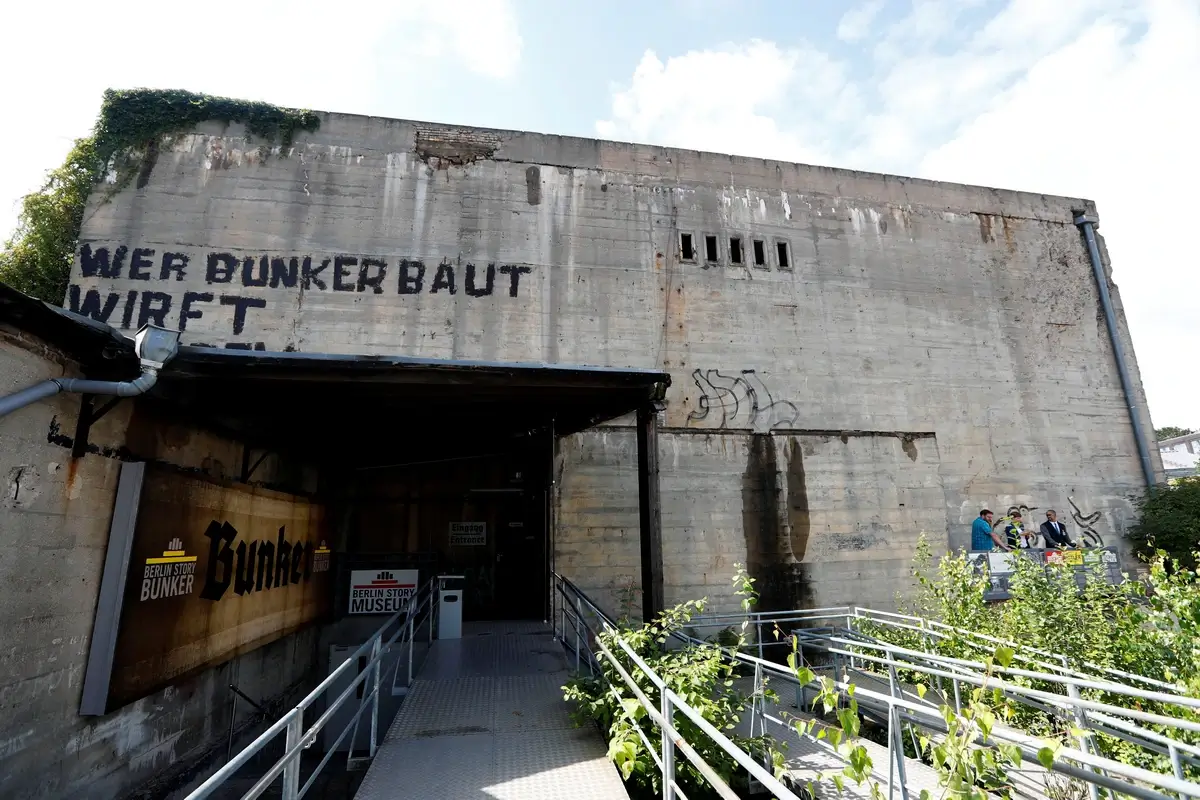
Image: reuters.com
Beneath Berlin lies a vast network of bunkers, tunnels, and subterranean spaces, remnants of its turbulent history. Berliner Unterwelten, a museum dedicated to these underground structures, offers guided tours that reveal hidden stories from WWII and the Cold War. Visitors can explore air raid shelters, flak towers, and Cold War bunkers, each telling a unique part of Berlin’s history.
The tours highlight how these underground spaces were used for protection during bombings and potential nuclear threats, showcasing artifacts and recounting personal stories of survival and escape attempts.
18. The Berlin Bear
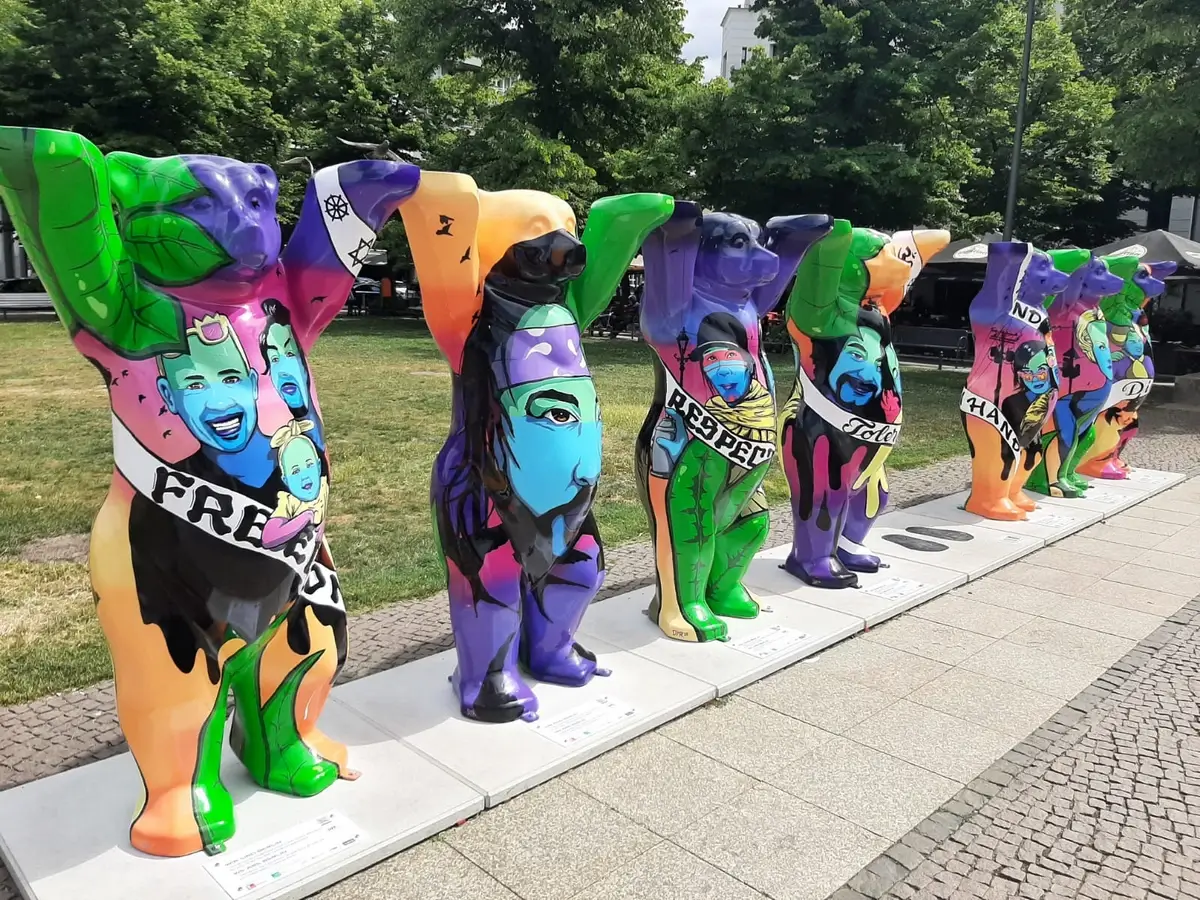
Image: vagabundler.com
The bear is an iconic symbol of Berlin, prominently featured on the city’s coat of arms. This emblematic animal traces its roots back to the 13th century when it was first used as a heraldic symbol. Over the centuries, the Berlin Bear has evolved into a beloved cultural icon, symbolizing the city’s strength and resilience.
Today, the bear is celebrated in numerous public sculptures and artworks throughout Berlin. Notable examples include the “Buddy Bears,” a series of painted bear statues designed by various artists to promote peace and tolerance. These colorful bears can be found in different locations across the city, adding a vibrant artistic touch to the urban landscape.
The bear also appears in everyday signs and decorations, such as the famous Ampelmännchen traffic signals, which feature a bear motif. This widespread presence of the bear in Berlin’s public spaces not only highlights its historical significance but also its role in modern cultural expression.
19. The Humboldt University
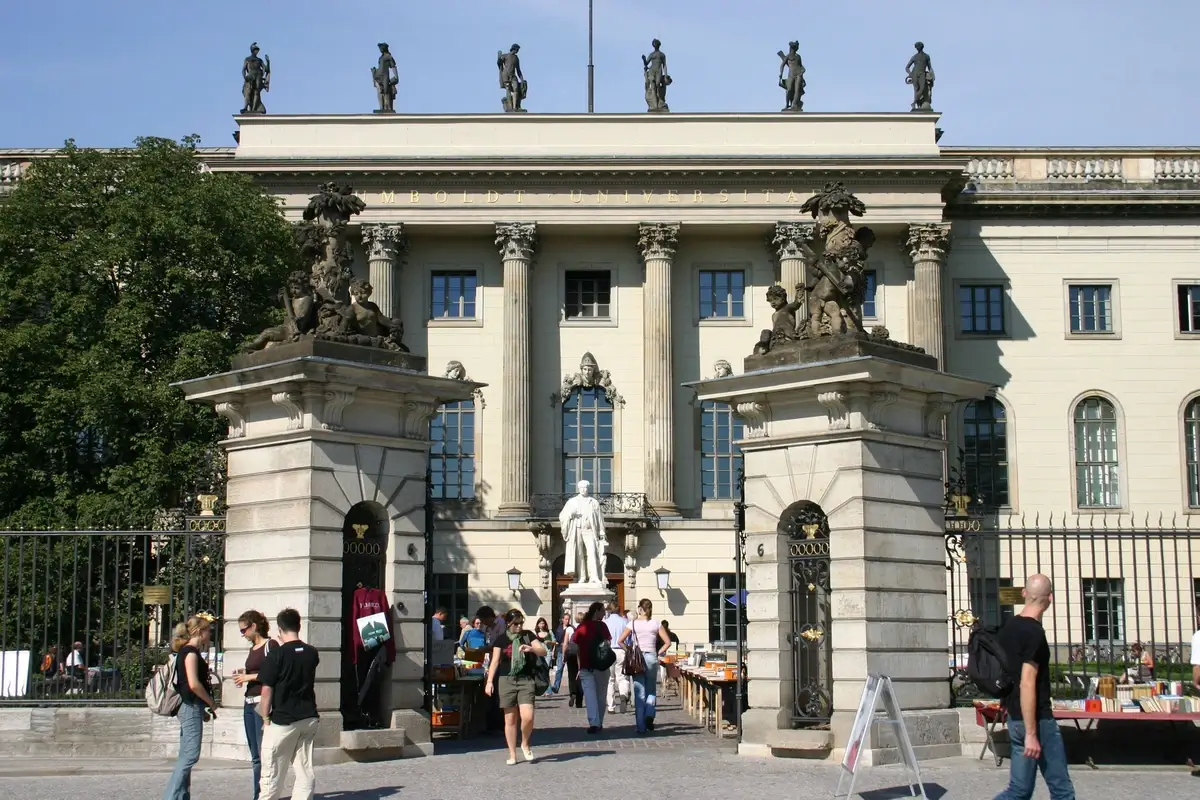
Image: global.uzh.ch
Founded in 1810 by Wilhelm von Humboldt, Humboldt University in Berlin is one of Germany’s oldest and most prestigious universities. It has played a significant role in shaping modern education and research. The university’s notable alumni include influential figures such as Albert Einstein, who lectured here from 1914 to 1928, and Karl Marx, who studied law and philosophy in the 1830s.
Humboldt University has endured and evolved through turbulent historical periods, including the expulsion of Jewish academics during the Nazi era and the political upheavals of post-war Germany. Despite these challenges, it has continued to foster international cooperation and academic excellence. Today, the university offers a wide range of programs across eleven faculties, attracting students and scholars from around the world.
20. A Dog-Friendly City
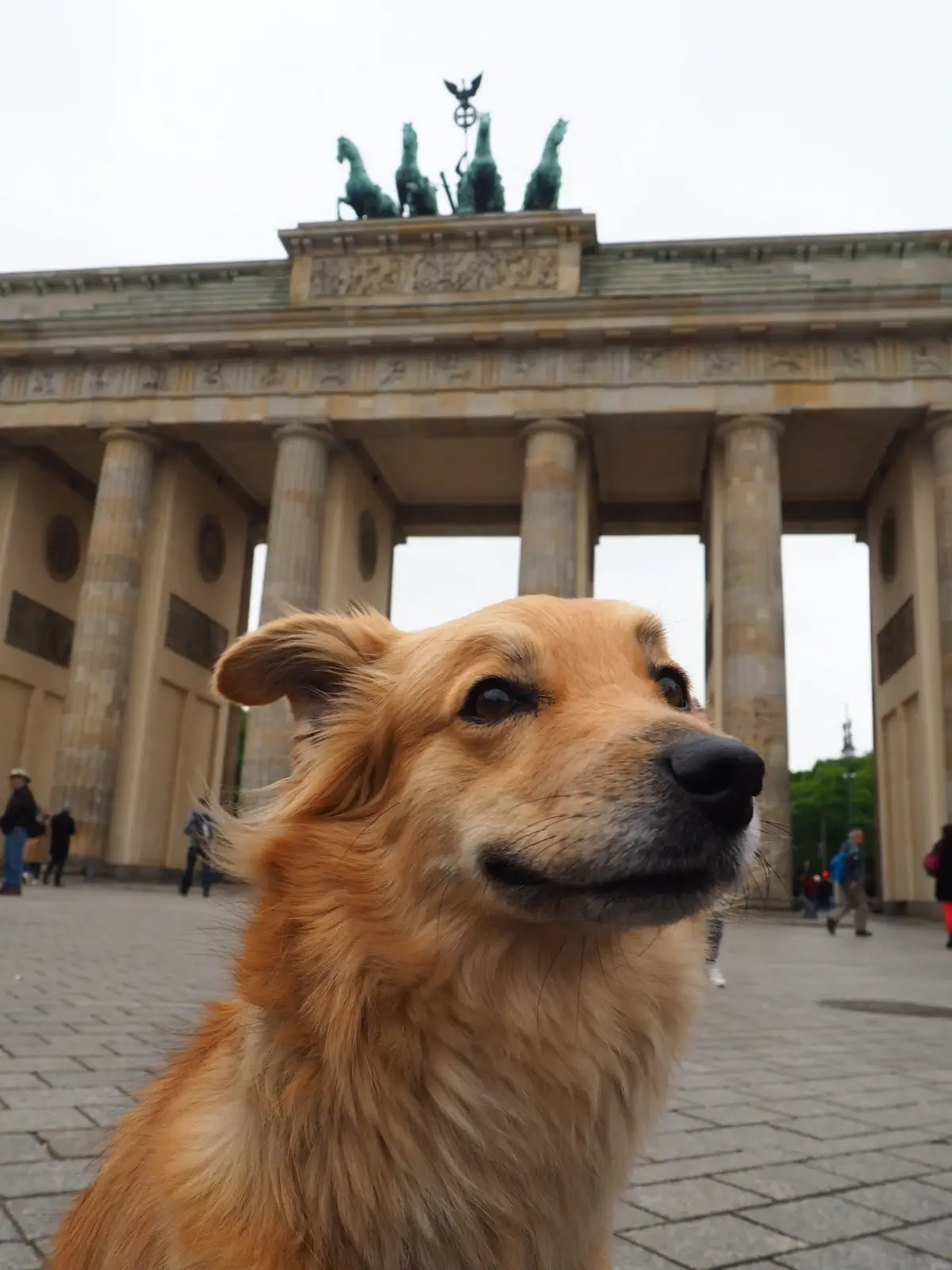
Image: thetinytravelogue.com
Berlin is renowned as Germany’s most dog-friendly city, home to over 200,000 dogs. This canine haven offers a plethora of amenities and activities for dogs and their owners. Numerous parks, including the expansive Tiergarten and the scenic Tempelhofer Feld, provide ample space for dogs to roam and play. Berlin’s public transportation system is also dog-friendly, allowing pets to accompany their owners on buses and trains.
The city’s dedication to its furry residents is evident in its many dog-friendly cafes, restaurants, and even shops. Initiatives like the “Hundewiese” (dog meadows) are specifically designed for dogs to socialize and exercise freely. Berliners’ love for dogs is also reflected in various events and meetups that cater to dog owners and their pets.
21. Public Transport System
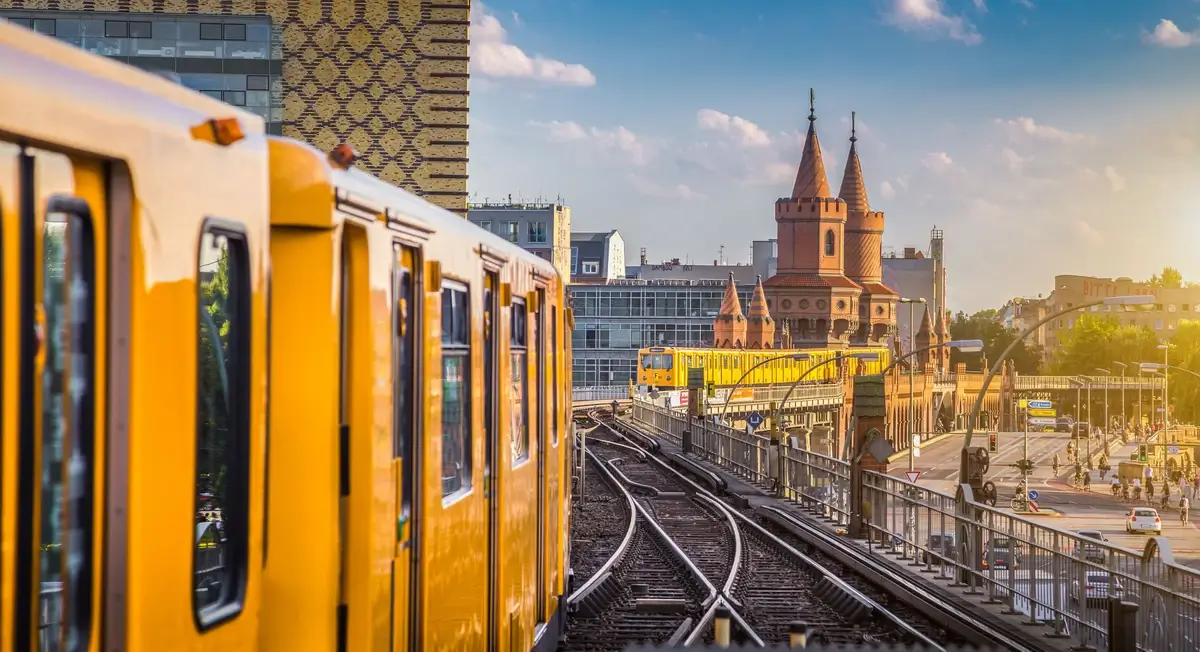
Image: travel.thewom.it
Berlin’s extensive public transport system spans 473 km, enabling efficient daily travel around the city. This network comprises the U-Bahn (subway), S-Bahn (commuter rail), buses, and trams, facilitating over 1.5 billion trips annually.
With its extensive coverage, the transport system can theoretically encircle the globe 8.7 times each day. The U-Bahn alone features nine lines, while the S-Bahn adds further connectivity across the metropolitan area. This infrastructure not only supports daily commuting but also makes Berlin one of the most accessible cities for tourists.
22. Döner Kebabs in Berlin
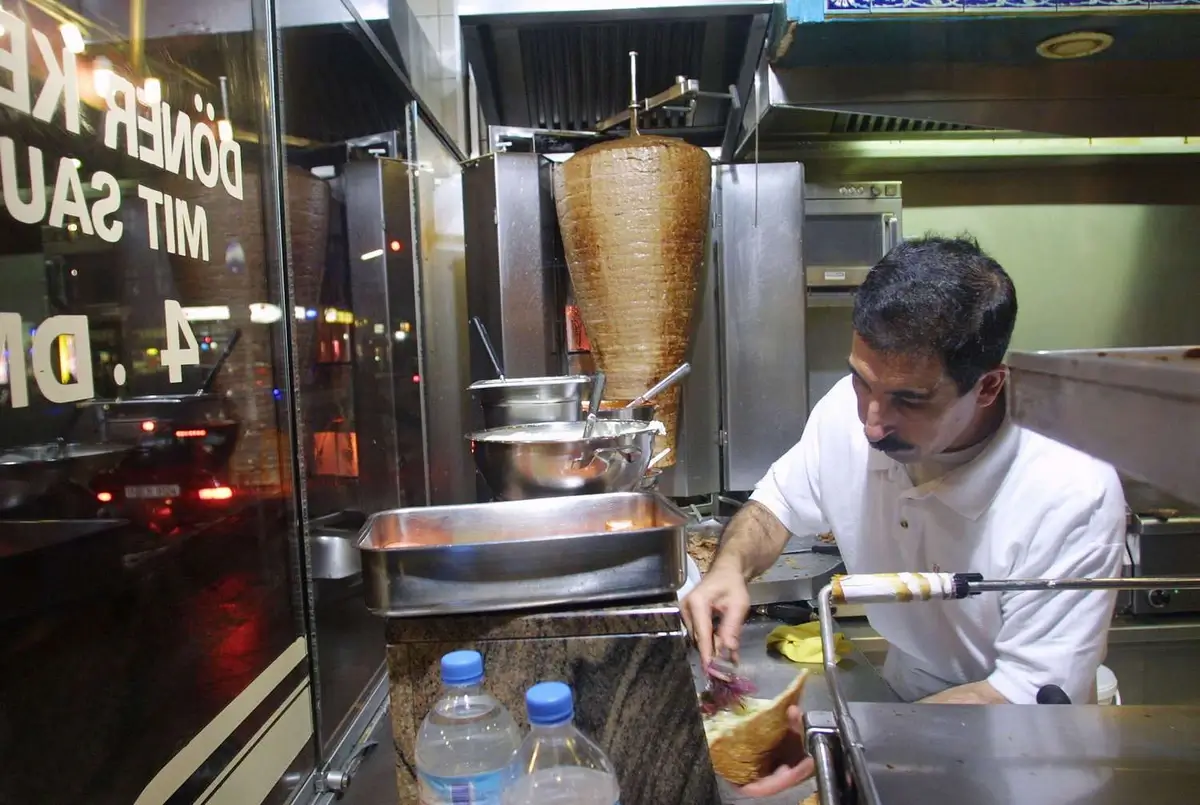
Image: tripsavvy.com
Berlin is a hotspot for döner kebabs, with an estimated 950 kebabs consumed daily. The city’s love for this Turkish-inspired street food traces back to 1972 when Kadir Nurman and Mehmet Aygün introduced the dish, transforming it into a Berlin staple.
Each döner spit weighs about 63 kg, contributing to the popularity and prevalence of kebab stands across the city.
23. Spätis: Berlin’s Iconic Late-Night Stores
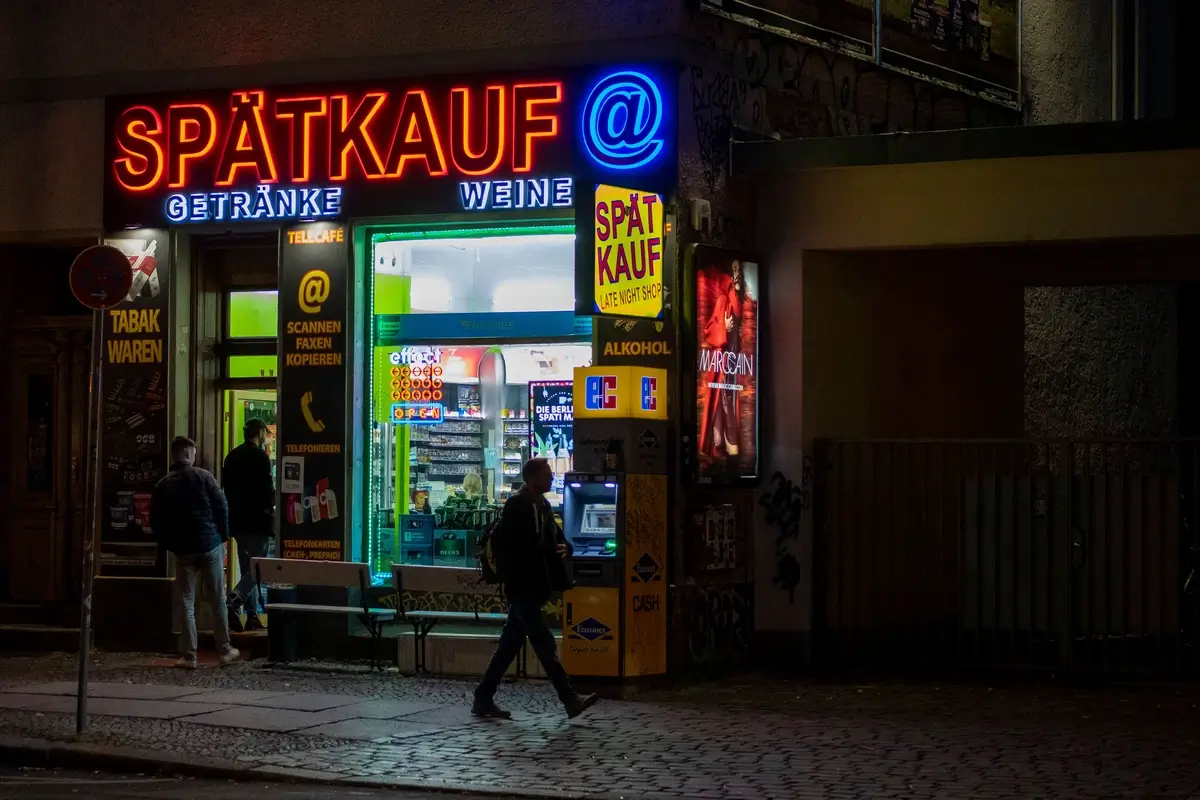
Image: berliner-zeitung.imgix.net
Berlin boasts around 1,000 Spätis (late-night stores), deeply embedded in the city’s culture. Originating from the GDR era, these stores initially served shift workers with necessities and have since evolved into multifunctional community hubs.
Spätis offer a wide range of products, from snacks and drinks to household items, and are known for their extended hours, including weekends and holidays. They play a vital role in Berlin’s neighborhood life, fostering social interactions and community bonds.
24. Largest City by Area
Berlin, covering an area of 891.8 km², holds the title of Germany’s largest city by area. This sprawling urban expanse includes diverse neighborhoods, extensive parks, and numerous bodies of water.
The city’s size has contributed to its rich cultural and historical tapestry, offering residents and visitors a variety of experiences ranging from the bustling city center to tranquil green spaces like the Tiergarten. Berlin’s vast area also facilitates its status as a major hub for political, economic, and cultural activities in Germany.
25. Cultural Diversity
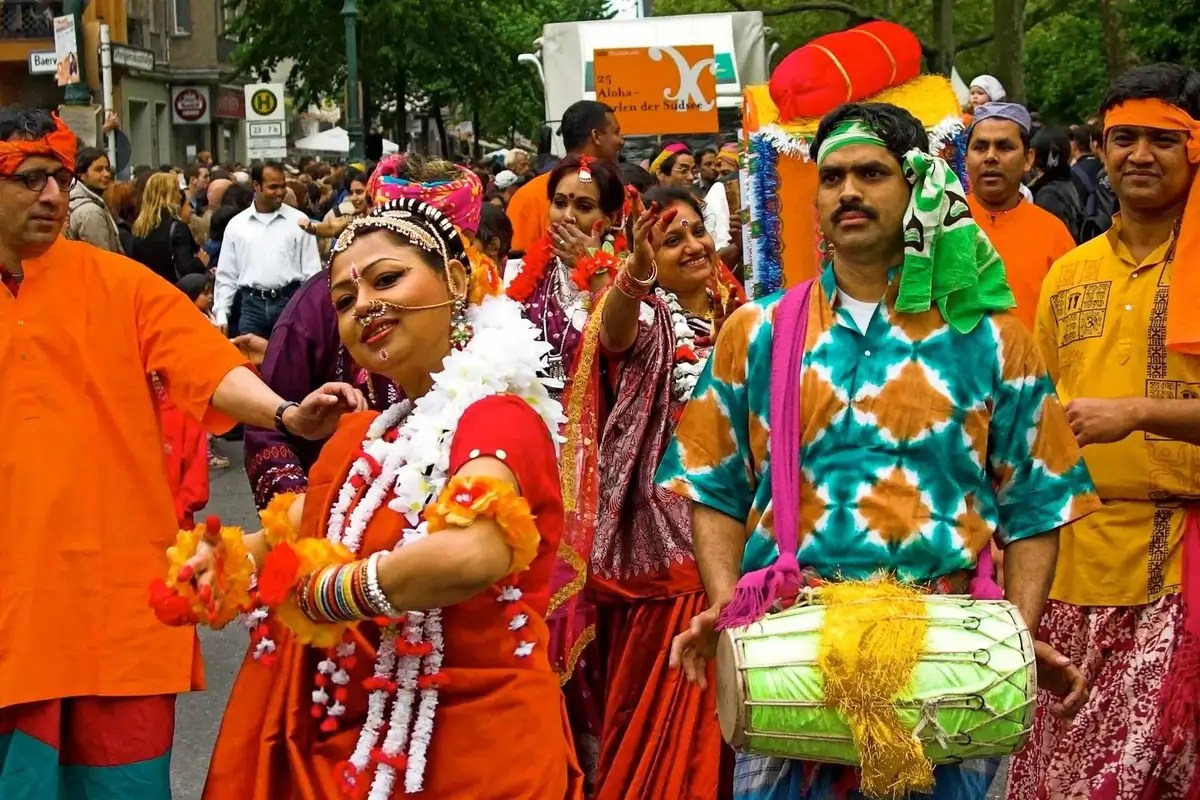
Image: hotels.com
Berlin is one of the most diverse cities in the world, home to residents from over 190 nationalities. This cosmopolitan nature is evident in its vibrant neighborhoods, where cultural influences from around the globe are celebrated.
The city hosts large communities from Turkey, Poland, and Vietnam, with each group contributing to Berlin’s rich cultural tapestry. About 21% of Berlin’s population is foreign-born, reflecting its historical role as a hub for immigrants and expatriates. The city’s multicultural fabric is also seen in its food, festivals, and everyday life, making it a unique melting pot of cultures.
26. Most Singles
Berlin stands out with its high proportion of singles, where approximately 54% of households consist of single individuals. This phenomenon can be attributed to the city’s dynamic lifestyle, which emphasizes independence and personal freedom. Berlin’s vibrant culture and active social scene make it conducive for people to live alone and pursue individual interests.
The city’s openness to diverse lifestyles and the prevalence of casual relationships contribute to the high number of singles. This unique demographic trend highlights Berlin as a hub for those seeking an independent and flexible way of life.
FAQ
What is Berlin famous for?
Berlin is famous for its rich history, vibrant cultural scene, and iconic landmarks. It is known for the Berlin Wall, Brandenburg Gate, and Museum Island. Berlin is also renowned for its nightlife, diverse arts, and music festivals.
Why is Berlin called Berlin?
The name “Berlin” is believed to be derived from the old Polabian word “berl,” meaning “swamp,” reflecting the city’s origins in a marshy region.
How old is Berlin as a city?
Berlin was founded in the 13th century, making it over 780 years old. It officially became a city in 1237.
Does Berlin have more canals than Venice?
Yes, Berlin has more canals than Venice. Berlin boasts around 180 kilometers of navigable waterways, surpassing Venice’s canal network.
How many dogs are there in Berlin?
Berlin is home to approximately 200,000 dogs, making it one of the most dog-friendly cities in Europe.


